By Dr. Steve A. Johnson, Department of Wildlife Ecology & Conservation, University of Florida
As I was pondered writing about snakes for Panhandle Outdoors, an email notification appeared on my computer screen: “Snake in Pensacola Bay”. As a State Extension Specialist with the University of Florida’s Institute of Food and Agricultural Sciences I receive a lot of email requests to identify snakes and other reptiles. But the subject line of this message really got my attention because most of Florida’s approximately 50 species of native snakes are terrestrial, and with few exceptions, our aquatic snakes only occur in freshwater. Florida is home to one snake that lives in the marine environment, the Saltmarsh Watersnake (Nerodia clarkii), but they inhabit shorelines and rarely stray far from cover. And sea snakes are only found the Pacific Ocean basin—they do not naturally occur in the Gulf of Mexico.
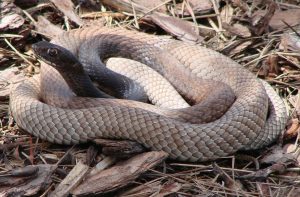
Eastern Coachwhips are long and thin, and most adults have a dark head and upper body. The rest of the body is tan or brown and the scale pattern on the tail resembles a braided bullwhip. Photo by Nancy West.
With anticipation I opened the email and viewed the attached images. To my surprise the snake seen by a fisherman who “came across a snake swimming out in the middle” of Pensacola Bay was an Eastern Coachwhip (Masticophis flagellum). In my almost 20 years with the University of Florida I’ve been emailed hundreds of times with requests to identify snakes. Although the coachwhip is a fairly common snake in Florida, its rarely the species I’m asked to identify. But I distinctly remember another email about 10 years ago from a gentleman in southeastern Florida who claimed he had killed a deadly Taipan snake, or at least something that looked to him like a Taipan. He told me he had lived in Florida for 30 years and knew how to identify snakes, but he had never seen a native snake that looked like this. There are three recognized species of Taipans, they are all native to Australia and are among the world’s most venomous land snakes. However, Florida is the global epicenter for introductions of non-native reptiles, due mainly to imports for the exotic pet reptile trade, so I did not immediately dismiss his assertion of Taipan, but I was highly suspect. Fortunately, the image attached to the email was not a Taipan. But unfortunately, it was an Eastern Coachwhip that he needlessly killed. Coachwhips are not venomous and are certainly not deadly of even dangerous, unless you are a lizard.
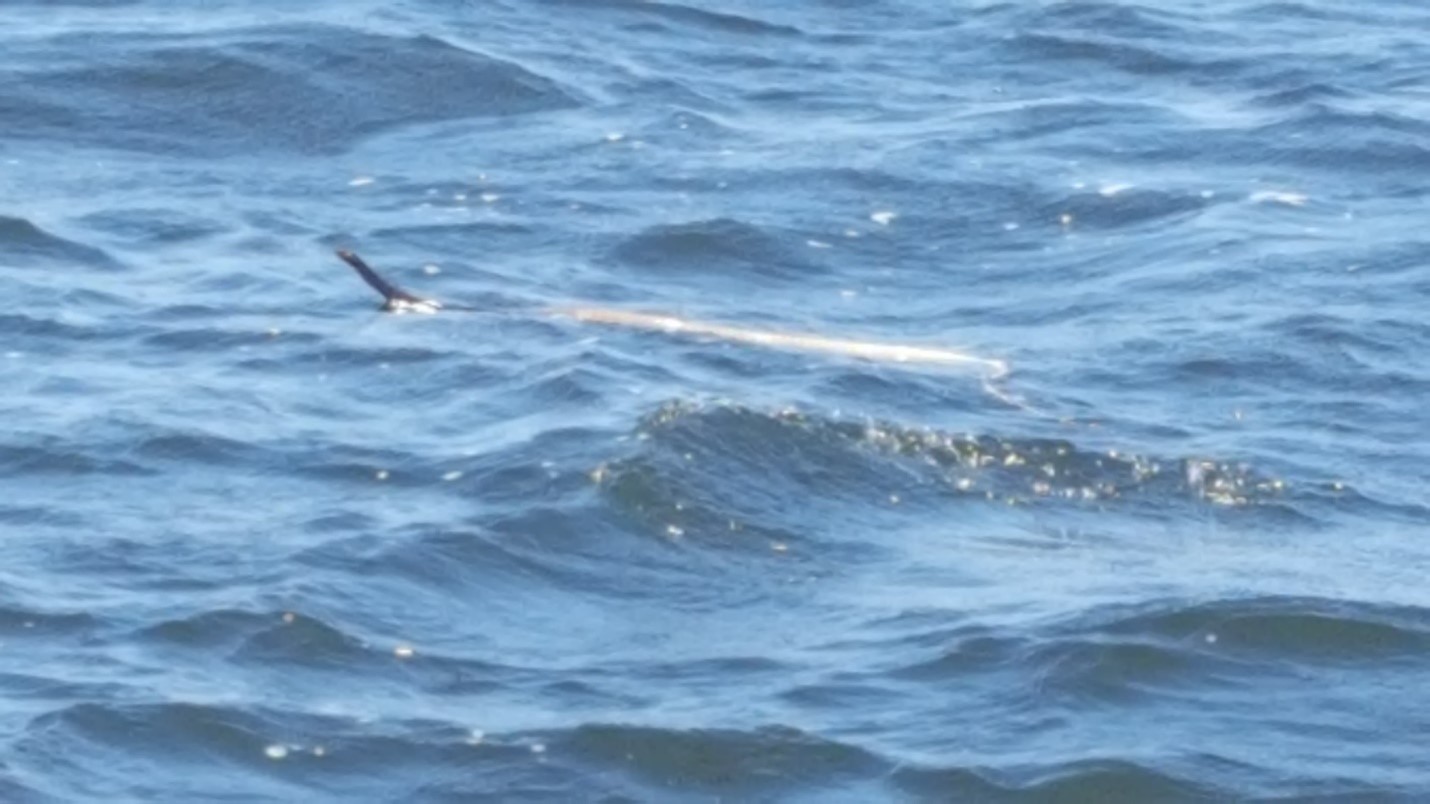
The dark head and upper body followed by a tan color allowed positive identification of this snake in Pensacola Bay as an Eastern Coachwhip. Photo by David Celko.
Coachwhip snakes are closely related to the Black Racer, the common “black snake” of the Southeast. Like racers, coachwhips are long, thin snakes with relatively large eyes. In fact, the Eastern Coachwhip is one of the longest native snakes in North America, reaching a maximum length of 8.5 feet, including the tail. The head and upper body of adult Eastern Coachwhips are usually dark brown or black, fading to brown or tan the rest of the length of their thin body. The scales on their tail resemble the braided pattern of a bullwhip, which is where they get their common name of coachwhip. Young Eastern Coachwhips are also tan colored, but they lack the dark head and upper body. The large eyes are especially obvious in young coachwhips.
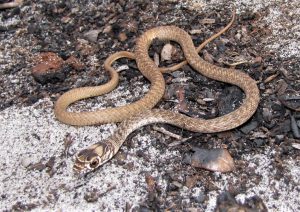
Juvenile Eastern Coachwhips are quite thin and have large eyes. They lack the dark-colored head and upper body of most adults. Photo by Dr. Steve A. Johnson, UF/IFAS.
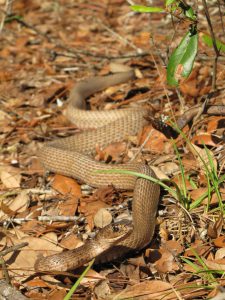
In northern peninsular Florida adult Eastern Coachwhips may lack a dark-colored head and upper body. Photo by Dr. Steve A. Johnson, UF/IFAS.
Eastern Coachwhips actively forage for lizards during the day, and they also eat small mammals, birds, frogs, and even small turtles. While hunting for prey they often move about with their head raised above the ground, visually searching for signs of movement. Eastern Coachwhips have a strong bite, which is how they subdue larger prey—they do no kill prey by constriction like do rat snakes. Coachwhips are fast snakes and can crawl more than 3.5 mph. When startled they often rapidly escape into a burrow or climb into a shrub or small tree. At night they shelter in burrows made mammals as well as the Gopher Tortoise.
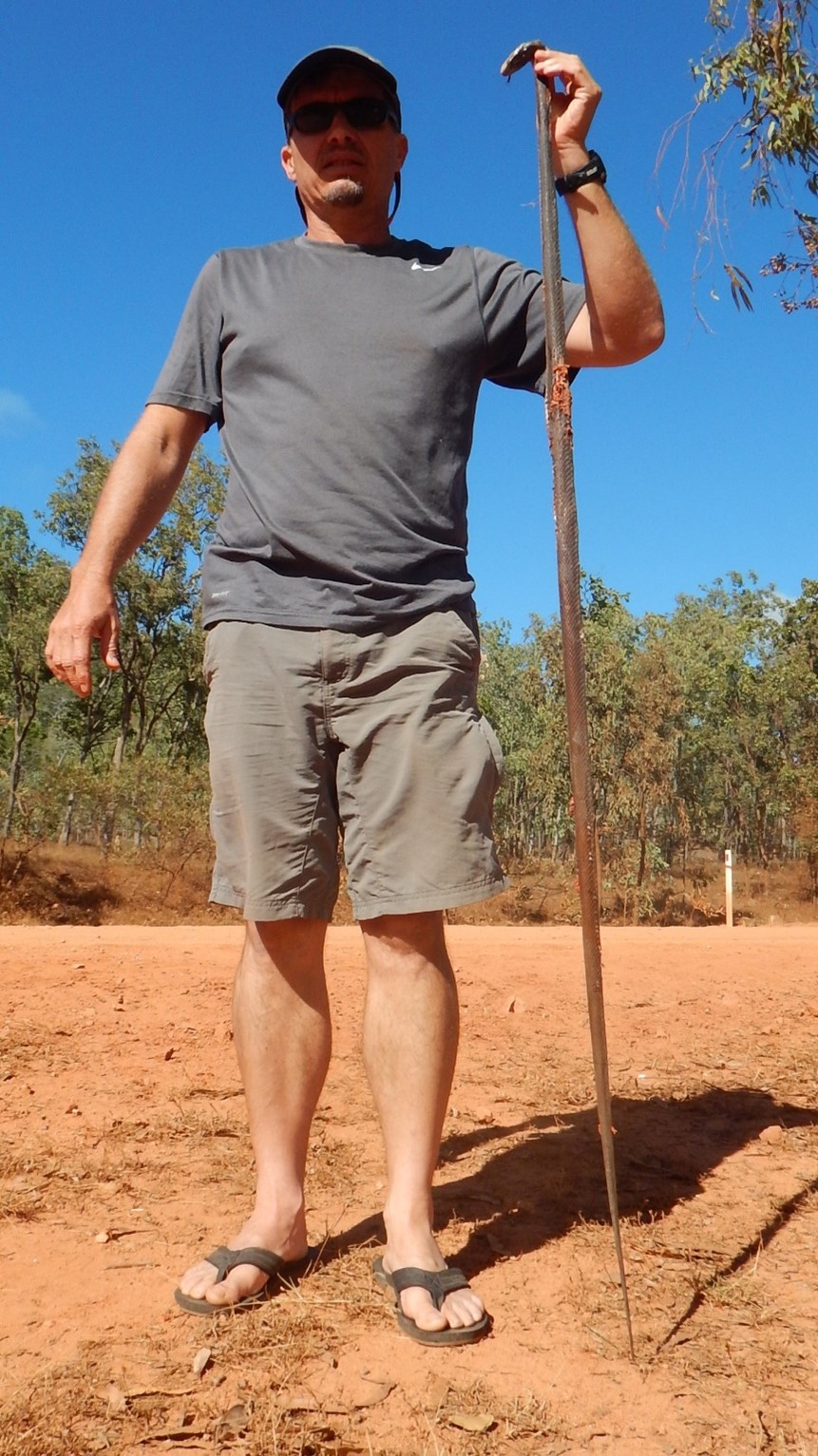
The author holding a (dead) highly venomous Taipan in far north Queensland, Australia. Even in very remote places, roads and vehicles are a source of snake mortality. The Taipan resembles the Eastern Coachwhip of Florida, but taipans only occur in Australia. Photo by Dr. Todd Campbell, University of Tampa.
Like all Florida’s snakes, Eastern Coachwhips are threatened by habitat loss and fragmentation by roads. Coachwhips move around a lot, and often get smashed by vehicles. So do the right thing and “give a snake a brake” the next time you see one attempting to cross a road. And certainly, never kill an Eastern Coachwhip on purpose as they are not venomous and don’t pose any danger to people or pets.
- Snake Watch 1st Quarter Report; 2024 - April 20, 2024
- Now is the Time to Search for Invasive Cogongrass - April 20, 2024
- Searching for Mangroves in the Florida Panhandle - April 6, 2024
